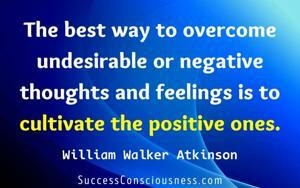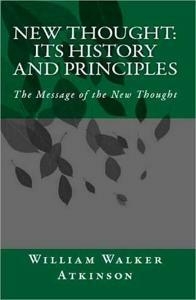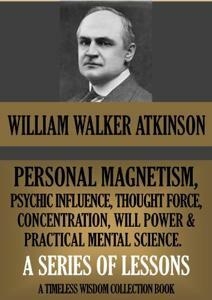This website uses cookies
This website uses cookies. For further information on how we use cookies you can read our Privacy and Cookie notice
This website uses cookies. For further information on how we use cookies you can read our Privacy and Cookie notice
In stock
Easy Return, Quick Refund.Details
QABETE ENTERPRISES
92%Seller Score
62 Followers
Shipping speed: Excellent
Quality Score: Excellent
Customer Rating: Average







By William Walker Atkinson
Your Mind and How to Use It is an influential early 20th-century self-help and psychology book by William Walker Atkinson, a leading figure in the New Thought movement. Atkinson explains the structure and functions of the human mind in accessible language, combining metaphysical concepts with emerging psychological insights. The book is designed as a practical manual, offering readers concrete ways to better understand and utilize their mental faculties for personal improvement and self-mastery.
Atkinson divides the mind into distinct regions based on function:
Conscious Mind:
The reasoning, decision-making aspect aware of itself and its surroundings.
Subconscious Mind:
The deeper, automatic processes, habits, instincts, and emotionally charged memories.
Superconscious (sometimes referenced):
Intuitive and inspirational faculties—what Atkinson likens to flashes of genius, creativity, or sudden insight.
| Theme | Description |
|---|---|
| Mental Duality | The mind has both conscious (active) and subconscious (passive) components. |
| Habit Formation | Repetition and suggestion shape subconscious beliefs and behaviors. |
| Power of Thought | Thoughts are not just abstract—they have real effects on personality and outcomes. |
| Suggestion and Autosuggestion | We can deliberately reprogram the subconscious through autosuggestion and focused attention. |
| Mind-Body Connection | The state of one’s mind influences physical health, energy, and even recovery. |
| Control and Will | The cultivated will can direct change, channeling mental energy purposefully. |
Self-Observation:
Encourages readers to study their own mental habits and thought patterns without judgment.
Affirmations:
Suggests regular positive statements to overwrite negative subconscious programming.
Visualization:
Advocates for imagined rehearsal of desired behaviors and outcomes to reinforce new patterns.
Atkinson’s work is a foundation of the New Thought tradition, emphasizing personal agency, creative mental power, and practical spirituality. His material is rooted in both metaphysical philosophy and emerging psychological science, making it accessible for individuals seeking self-development outside academic or strictly religious frameworks.
Identity and Change:
By recognizing habitual thought patterns, readers are empowered to consciously shape their destinies rather than act from inherited or unconscious impulses.
Determinism vs. Free Will:
The book asserts that while we can be shaped by early experiences or environment, the human will can override conditioning, enabling meaningful change.
Your Mind and How to Use It remains a classic self-development guide. Its principles concerning self-knowledge, mental discipline, and the mind’s creative power have influenced countless subsequent writers in psychology, self-help, and popular spirituality.

Death certificate for William Walker Atkinson wikipedia
William Walker Atkinson (1862–1932) was a prolific American author, attorney, and pioneer of the New Thought movement. He wrote widely on mental science, personal magnetism, yoga, and practical mysticism, often publishing under several pseudonyms. His practical, no-nonsense approach and clear writing style made his books enduringly popular.







By William Walker Atkinson
Your Mind and How to Use It is an influential early 20th-century self-help and psychology book by William Walker Atkinson, a leading figure in the New Thought movement. Atkinson explains the structure and functions of the human mind in accessible language, combining metaphysical concepts with emerging psychological insights. The book is designed as a practical manual, offering readers concrete ways to better understand and utilize their mental faculties for personal improvement and self-mastery.
Atkinson divides the mind into distinct regions based on function:
Conscious Mind:
The reasoning, decision-making aspect aware of itself and its surroundings.
Subconscious Mind:
The deeper, automatic processes, habits, instincts, and emotionally charged memories.
Superconscious (sometimes referenced):
Intuitive and inspirational faculties—what Atkinson likens to flashes of genius, creativity, or sudden insight.
| Theme | Description |
|---|---|
| Mental Duality | The mind has both conscious (active) and subconscious (passive) components. |
| Habit Formation | Repetition and suggestion shape subconscious beliefs and behaviors. |
| Power of Thought | Thoughts are not just abstract—they have real effects on personality and outcomes. |
| Suggestion and Autosuggestion | We can deliberately reprogram the subconscious through autosuggestion and focused attention. |
| Mind-Body Connection | The state of one’s mind influences physical health, energy, and even recovery. |
| Control and Will | The cultivated will can direct change, channeling mental energy purposefully. |
Self-Observation:
Encourages readers to study their own mental habits and thought patterns without judgment.
Affirmations:
Suggests regular positive statements to overwrite negative subconscious programming.
Visualization:
Advocates for imagined rehearsal of desired behaviors and outcomes to reinforce new patterns.
Atkinson’s work is a foundation of the New Thought tradition, emphasizing personal agency, creative mental power, and practical spirituality. His material is rooted in both metaphysical philosophy and emerging psychological science, making it accessible for individuals seeking self-development outside academic or strictly religious frameworks.
Identity and Change:
By recognizing habitual thought patterns, readers are empowered to consciously shape their destinies rather than act from inherited or unconscious impulses.
Determinism vs. Free Will:
The book asserts that while we can be shaped by early experiences or environment, the human will can override conditioning, enabling meaningful change.
Your Mind and How to Use It remains a classic self-development guide. Its principles concerning self-knowledge, mental discipline, and the mind’s creative power have influenced countless subsequent writers in psychology, self-help, and popular spirituality.

Death certificate for William Walker Atkinson wikipedia
William Walker Atkinson (1862–1932) was a prolific American author, attorney, and pioneer of the New Thought movement. He wrote widely on mental science, personal magnetism, yoga, and practical mysticism, often publishing under several pseudonyms. His practical, no-nonsense approach and clear writing style made his books enduringly popular.
1 BOOK

This product has no ratings yet.
/product/28/6513523/1.jpg?0107)